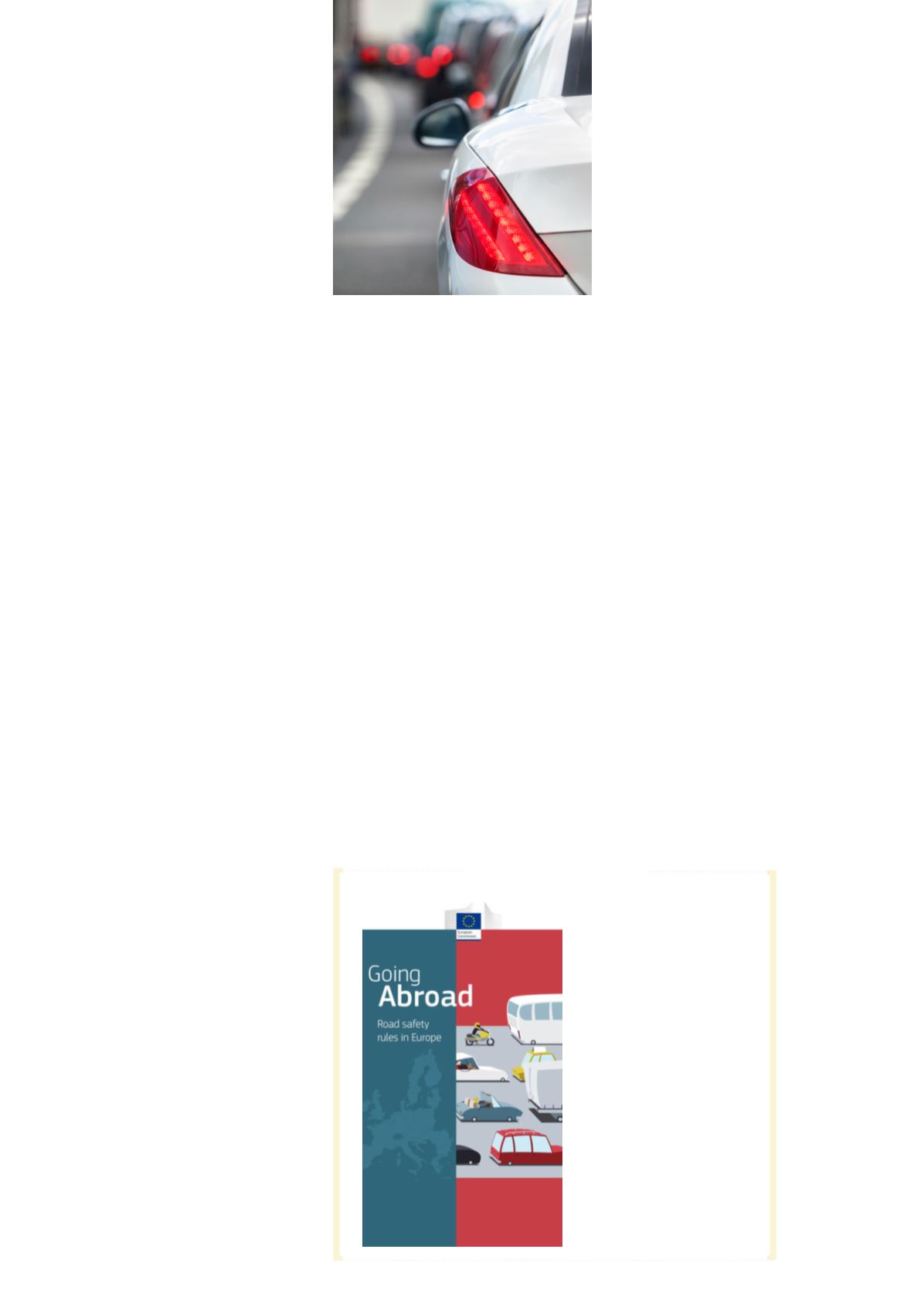

Improving road safety is one of the prime
objectives of the European Union’s trans-
port policy. The objective is to reduce road
fatalities by 50% by the year 2020.
To this end, it is necessary to increase
the safety of drivers and of infrastructures
through a combination of national coope-
ration measures, the exchange good prac-
tices, research, studies, and awareness
campaigns and, in some cases, regulation.
An important element of this policy is the
coherent application of sanctions for traffic
offenses in any of the Member States that
considerably endanger road safety. Hence,
the EU Directive 2015/413 of the European
Parliament and of the Council of 11 March
2015 facilitates the cross-border exchange
of information on road-safety-related traffic
offences.
In order to ensure that all offending drivers,
residents or non-residents in each of the
Member States, the Directive contempla-
tes a cross-border exchange of information
system for eight types of traffic offences
which enable access to data of the vehicle
that broke the law.
This Directive applies to the following road-
safety-related traffic offences:
1. Speeding;
2. Failing to use a seat-belt;
3. Failing to stop at a red traffic light;
4. Drink-driving;
5. Driving under the influence of drugs
(with the presence of drugs in the or-
ganism);
6. Failing to use a safety helmet;
7. The use of a forbidden lane;
8. Illegal use of a mobile telephone or
any other communication devices
while driving.
The applicable traffic law will be that of the
Member State where the offence takes
place.
When travelling, it is important to know
the traffic regulations of each country sin-
ce some of the basic rules could vary from
place to place: the rate of alcohol; excep-
The European Transport
Commission offers a free
app for mobiles called
“Going Abroad”, avai-
lable in 22 languages,
containing all the relevant
information for tourists
on European traffic regu-
lations. You can access
and download this app or
obtain further information
in the European Commis-
sion or in DGT respective
websites.
Going Abroad
tions with regards to the obligation of using
a seat-belt; speed limits; the use of the bi-
cycle lane or the emergency lane; the use
of safety helmets by drivers and bicycle
riders, or the obligation of driving with dip-
ped headlights during the day. There are
also differences in the types of offences and
the sanctions for breaching the regulations
such as using the mobile phone while dri-
ving or failing a drug test.


















